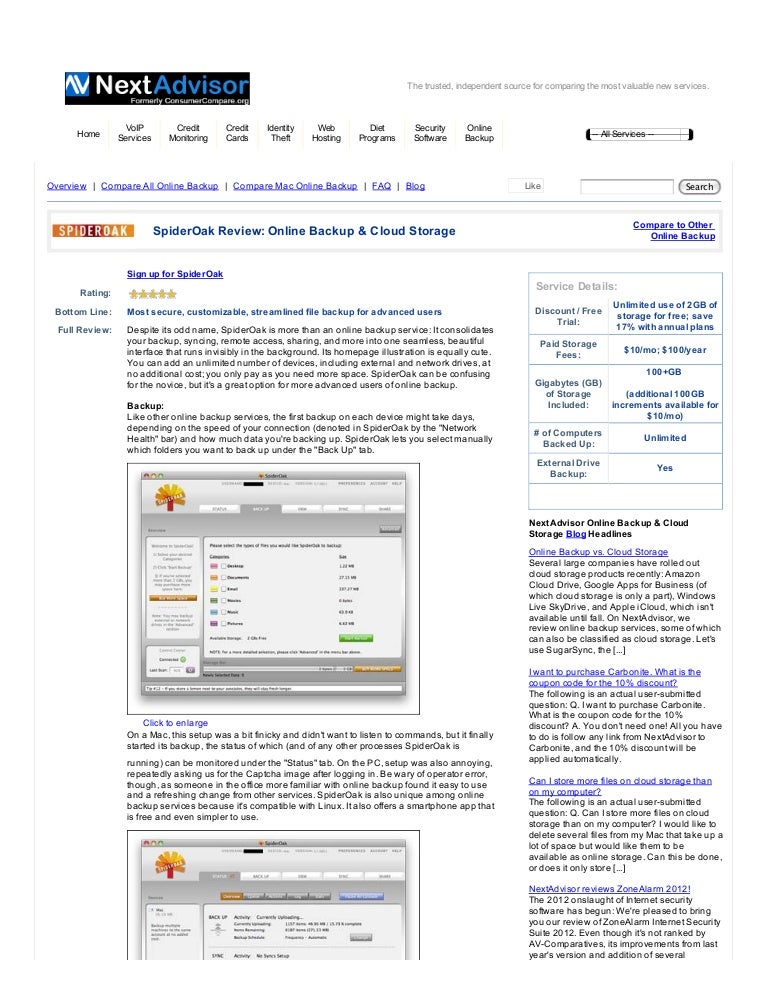
When the client is up and running, you have to specify the directories you want to back up and configure the backup settings. For example, you can create a SpiderOak account for your workgroup and then use the service to exchange files and documents between workgroup members, track changes, and back up the project data. This makes SpiderOak not only a nifty personal backup and synchronization tool, but also a great collaboration solution. Now you can link an unlimited number of machines to your account, and you can even share your account with other users. Once the client software is installed, launch it, and use the setup wizard to configure the client and link your machine to your SpiderOak account. On Debian and Ubuntu, you can do this by running the dpkg -i command as root.
SPIDEROAK BACKUP INSTALL
First, download the appropriate package and install it with your distro's package management tool. SpiderOak provides packages for a wide range of platforms and Linux distributions, including the latest releases of Debian, Fedora, and Ubuntu. Next, you should download and install the SpiderOak client software.
SPIDEROAK BACKUP UPGRADE
Generally, you might want to start with a free account, and if you like the service, you can upgrade at any time. Also, you'll get a discount if you pay a full-year subscription. The free plan gives you 2GB of storage, whereas the paid plan will cost you $10 per 100GB, meaning you can buy as much storage space as you need. The company offers both free and paid plans. To get started with SpiderOak, you have to create an account. These SpiderOak features are just a few to whet your appetite.


SpiderOak also makes a good choice for security-conscious users: Every account has its own unique encrypted key, and your data is encrypted not only during the upload and download process, but also on SpiderOak's servers. Using SpiderOak's web-based interface, you can access your backed up data from any machine, which can come in handy when you are on the move. Figure 1: SpiderOak client allows you to configure backup, share, and synchronization settings.īetter yet, even if you delete a file from your local machine, SpiderOak saves it on the server, so you can always restore it if needed.


 0 kommentar(er)
0 kommentar(er)
